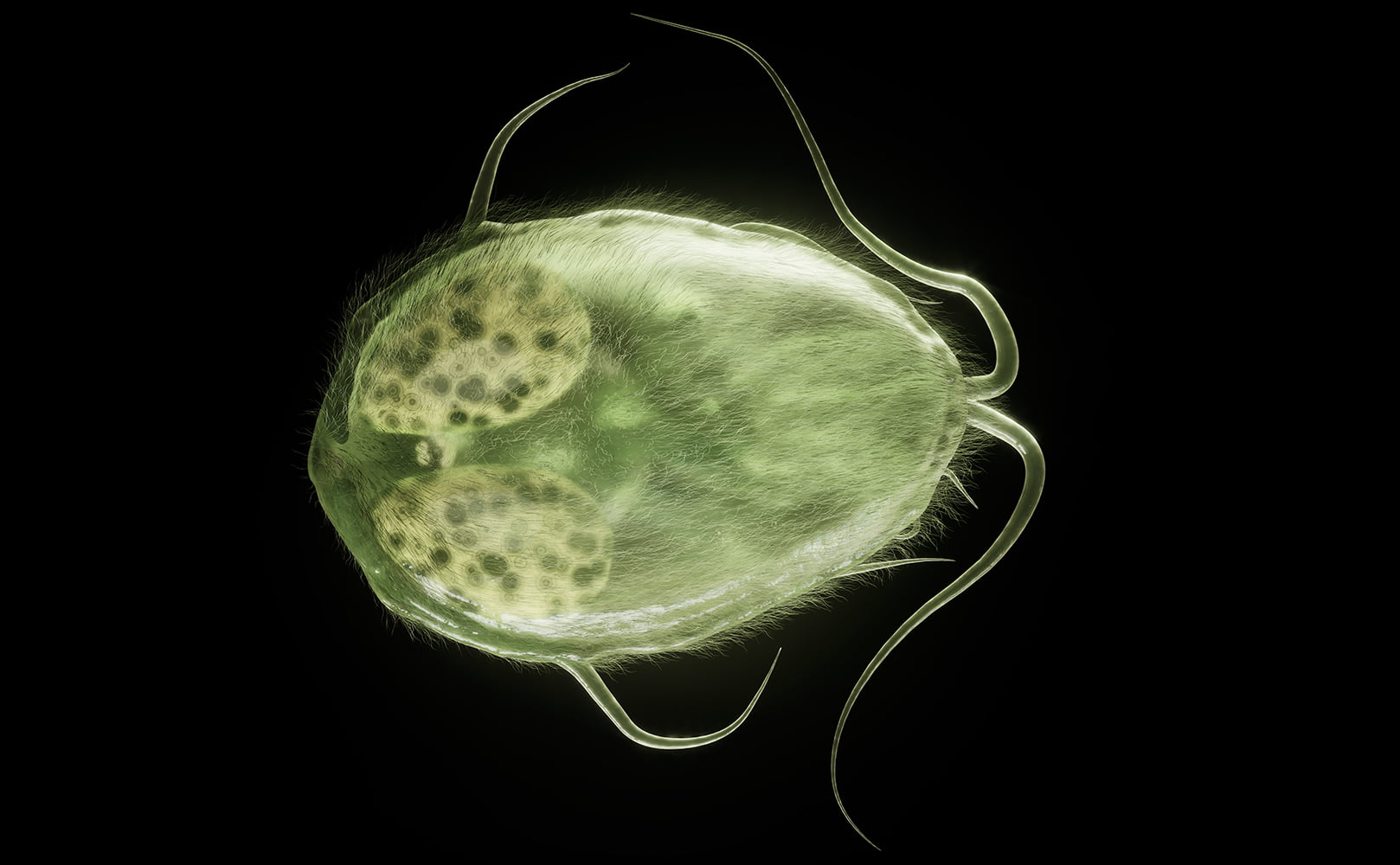Does UV Light Kill Parasites in Water? Learn Here!
Written by: Gene Fitzgerald // Last Updated: Nov 24, 2022
This page may contain affiliate links. If you buy a product or service through such a link we earn a commission at no extra cost to you. Learn more.
Parasites in water are a global health concern.
Fortunately, UV light is an effective water purification technique proven to kill up to 99.9999% of microorganisms.
But does UV light kill parasites in water, as well? Let’s find out!
Key Takeaways
- UV light kills parasites in water, but only when the UV dose is sufficient.
- For instance, Cryptosporidium and Giardia cysts require a UV dose of up to 10 mJ/cm² for log 4 (99.99%) inactivation.
What Is UV Light?
UV light is a type of electromagnetic radiation. Its wavelength ranges from 10 nm to 400 nm. UV radiation is naturally present in sunlight and makes up about 10% of the sunlight.
How Does UV Light Kill Parasites in Water?
Certain UV light is lethal to most parasites in water. When the right UV light, meaning UV-C light with a wavelength of 254 nanometers, enters a parasite it destroys the parasite’s DNA rendering it harmless.
That said, UV light disinfection works best when there are no floating particles in the water to shield the parasites from the UV rays (this is called shadowing).
Is UV Light Effective Against All Waterborne Parasites?
UV light is effective against all parasites, but this effectiveness is dose-dependent. In other words, some UV doses are too low to handle certain types of parasites.
Generally speaking, UV systems should have an intensity and saturation rating of at least 40 mJ/cm² (Class A UV systems) to completely disinfect clear water.
Class B UV systems which are rated at 16 mJ/cm² are only intended for supplement disinfection in previously disinfected water.
Inactivation Doses for Giardia and Cryptosporidium
The inactivation dose is the dose that kills a parasite. The UV dose is expressed as a product of irradiance (UV light intensity) and time of exposure. UV doses are stated as mJ/cm² or mWs/cm².
Giardia and Cryptosporidium, our two example parasites, are quite sensitive to UV irradiation. The UV dose needed for a 4-log (99.99%) inactivation of both is less than 10 mJ/cm². So, both a Class B and Class A UV system is typically enough to destroy them.
Does UV Disinfection Work in All Water Conditions?
UV disinfection only works in certain conditions, and if these conditions are not met, you risk consuming contaminated water.
Pre-Filtration
The first condition is that the water must be free of floating particles. This is because parasites and other microorganisms are extremely small and can hide behind particles to escape the UV light. You must install one or more pre-filtration stages in front of your UV system to eradicate these particles.
The most common pre-filtration is a 5-micron sediment filter that removes rust, sand, dirt, and other particles. If you use well water, you might need to add iron removal and water softening to your sediment filtration.
Tip: Test your water to see if it meets these conditions. If it doesn’t, you’ll need to treat your water before attaching the UV filter:
- Iron< 0.3 ppm
- Hardness < 7 grains per gallon (gpg)
- Turbidity< NTU
- Tannins <0.1 ppm
- Manganese < 0.05 ppm
UV Water Purifier Maintenance
Although UV water filters need less maintenance than other systems, you still need to do your part to ensure yours remains effective.
UV water filter maintenance typically involves the UV light bulb and the quartz glass sleeve. To keep your UV water filter running, you’d need to replace the bulb at least once a year.
You’d also need to clean the quartz glass sleeve and check it for permanent fogging. But on the bright side, you don’t need to do this too often. An annual clean-up is usually enough to handle most of the build-up.
After a while, the fogging becomes permanent, and you’d need to change the quartz sleeve entirely. This replacement is done ideally once every two years.
Besides the bulb and the quartz glass sleeve, you’d also need to keep an eye on the sealing rings at each end of the UV filter system. They usually work a long time without leaking, but you should always be on the lookout. Unaddressed leaks can grow into bigger problems.
Should I Test My Water After UV Disinfection?
Testing your water after UV disinfection is important because it lets you know if your treatment is effective.
Here are ways you can test your water:
- Test at a certified lab:
Lab tests give you detailed and 100% accurate results. However, you must visit an EPA-certified lab. The EPA has set standards that all labs must meet. You can find an EPA-certified lab on the EPA website. Most states have multiple approved labs, so it’ll be fairly easy to find one.
- Use a test kit:
You can use a DIY water test kit if you’d like to test your water on your own. DIY kits are economical and accurate. The best part is you can run a DIY test without being an expert. The kit pack comes with clear instructions for you to follow.
If you have any thoughts about the question, does UV light kill parasites in water, please don’t hesitate to leave a comment below!
Information provided on BOS is for educational purposes only. The products and services we review may not be right for your individual circumstances.
We adhere to strict editorial guidelines. Rest assured, the opinions expressed have not been provided, reviewed, or otherwise endorsed by our partners – they are unbiased, independent, and the author’s alone. We fact-check all content for accuracy. It is accurate as of the date posted and to the best of our knowledge.


